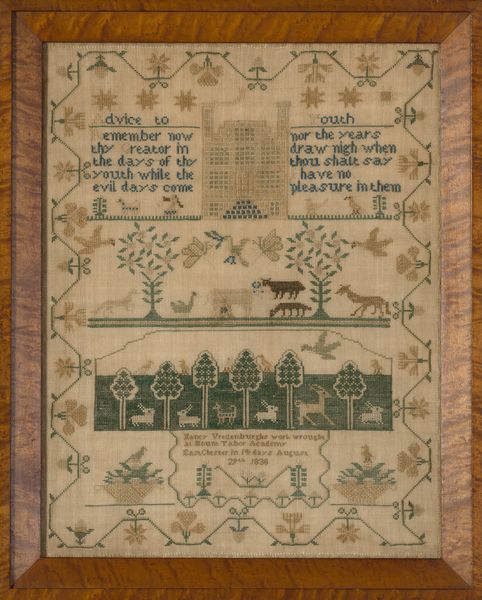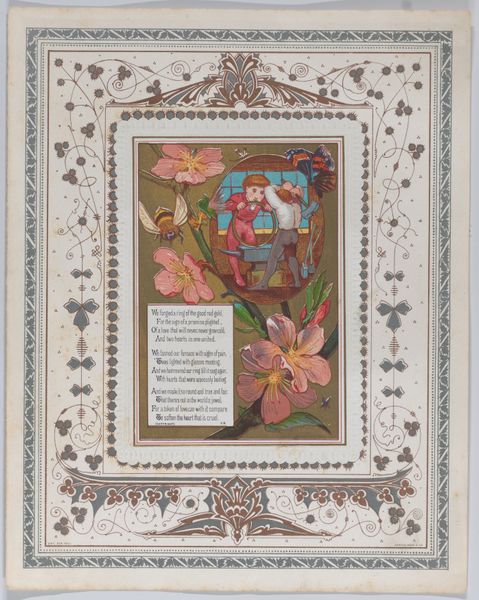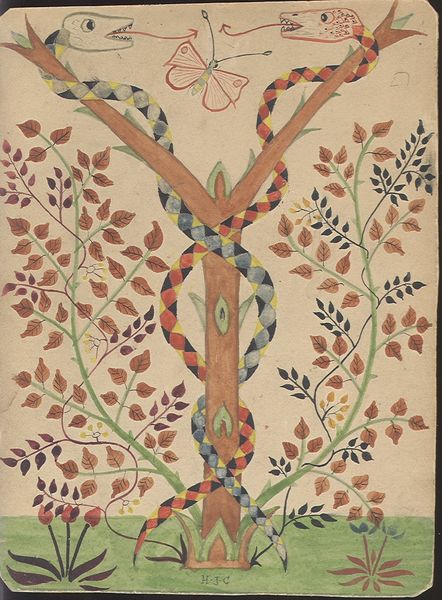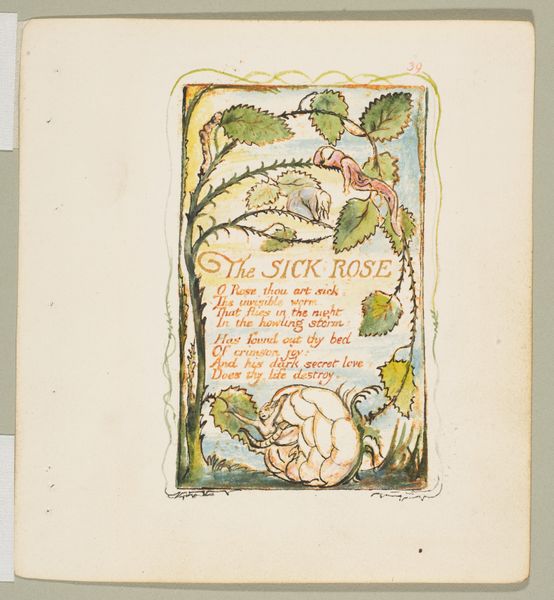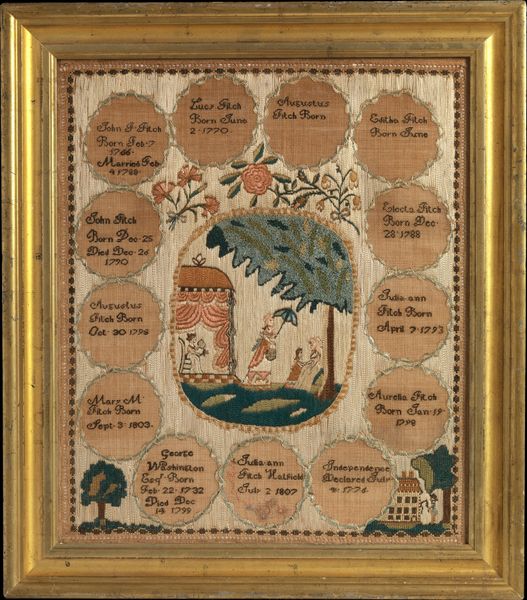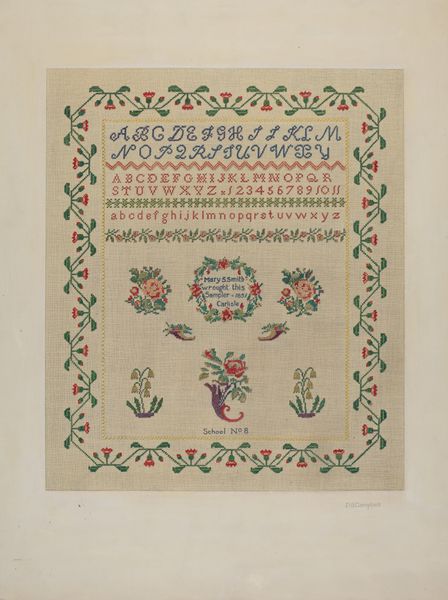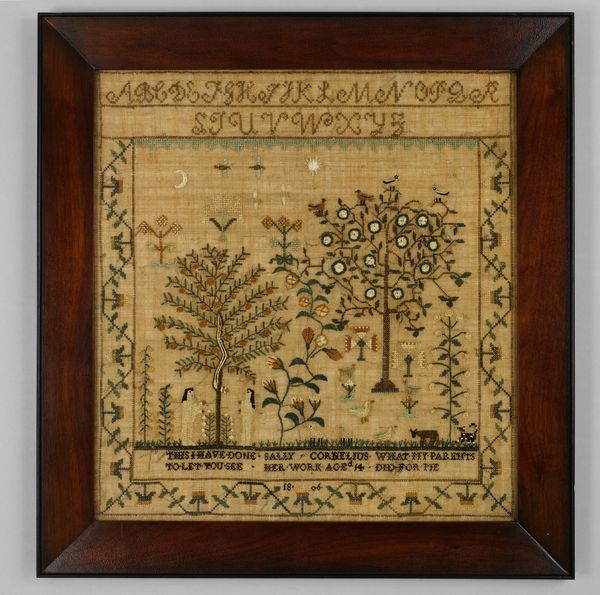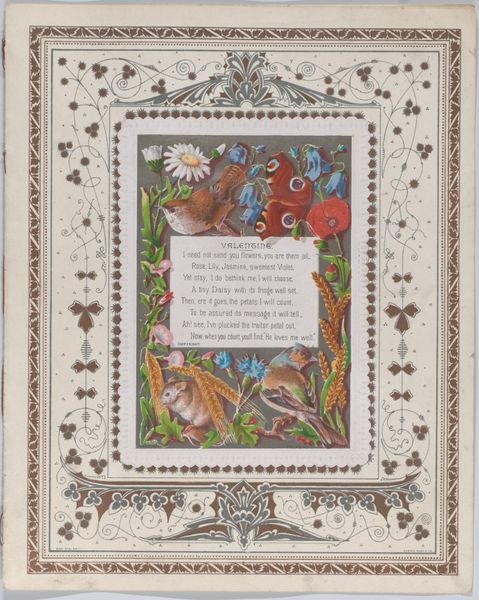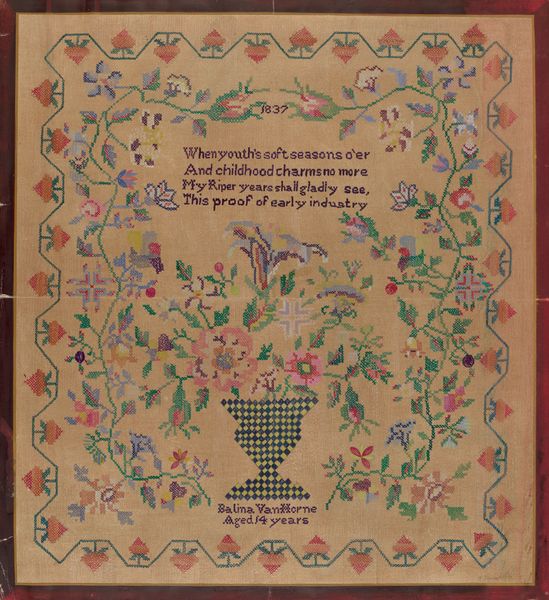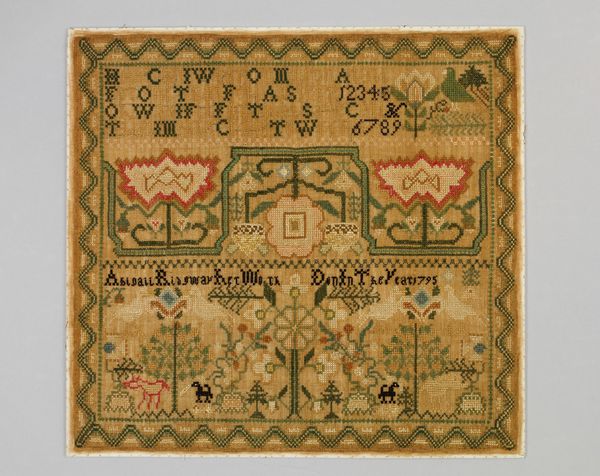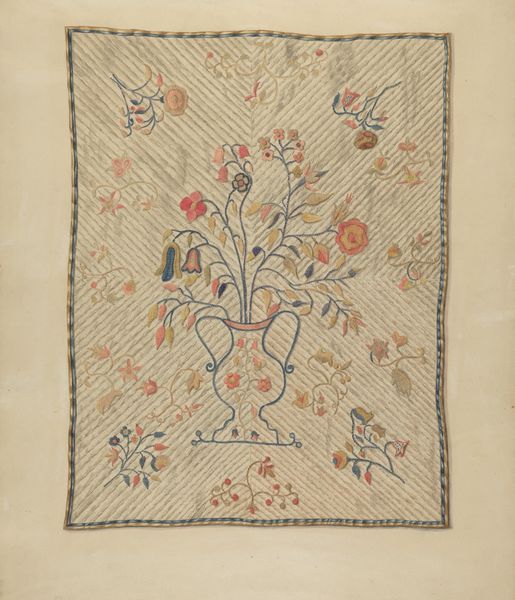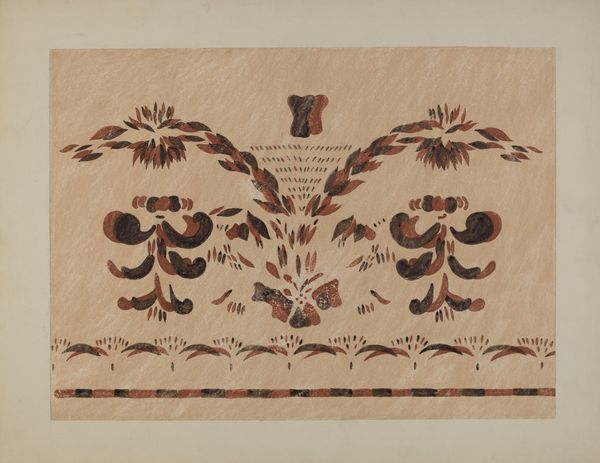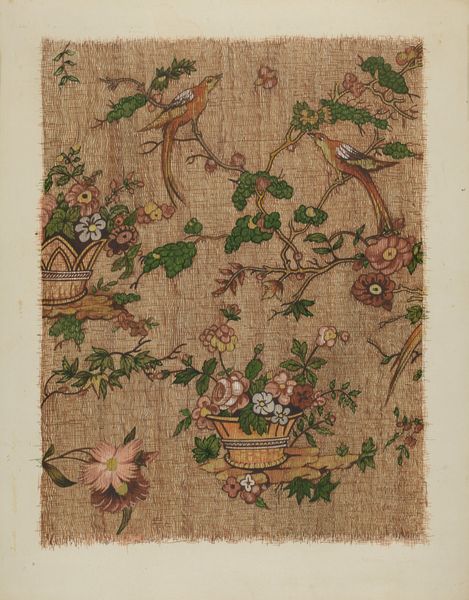
drawing, textile, watercolor
#
drawing
#
water colours
#
textile
#
watercolor
#
folk-art
Dimensions: overall: 32 x 25 cm (12 5/8 x 9 13/16 in.) Original IAD Object: 21 1/4" high; 21 1/2" wide
Copyright: National Gallery of Art: CC0 1.0
Curator: It feels like stepping back into a meticulously crafted past. The colours are muted, the details precise. Is it a watercolor or a textile? I almost can’t tell at first glance. Editor: Exactly! It's actually a drawing of a textile, an embroidered sampler, by Alfred Walbeck, circa 1937. The original sampler, referenced in the drawing, dates to 1821 and bears the inscription “Sidney Wilson’s Work.” There is some "folk-art" flavour about it, isn't it? Curator: "Sampler", like a visual recipe book, perhaps? To record particular skills, display motifs... almost like a family tree rendered in stitches and symbols. Editor: Precisely! Samplers traditionally served that didactic purpose. Look at the symmetry—the balanced composition and choice of repeated motifs point to harmony, order, and virtuous industry. Even the verses reinforce the importance of guiding your choices by 'truth and virtue', of guarding your life against vice. The colours suggest something of heritage and antiquity. Curator: There are many recurring domestic symbols like potted plants, trees and nesting birds. To me, the emphasis on symmetrical motifs feels symbolic of community and human interactions. It's fascinating how this meticulous reproduction captures the character of the earlier sampler, it’s like peering into somebody's inherited hopes and convictions. Do the names woven into it point to familial ties? Editor: That's likely. Notice the inscriptions of "Joseph Wilson", "Ann Wilson" in addition to "Sidney Wilson". Each detail bears emotional resonance and social weight. Curator: Definitely. It's a record, and this particular visual vocabulary would have held enormous personal importance, and broader meaning across the social circles to which the maker belonged. Editor: It is, isn’t it? Recreated in watercolor, this sampler continues to speak about preservation and memory. Walbeck’s rendition honours something essential about how individuals define themselves through craft, and maybe offers new meanings too, for us here, now, in the present. Curator: Absolutely. It prompts us to think about who we are, what ideals and visual forms shape us, and what sort of symbolic world we leave behind.
Comments
No comments
Be the first to comment and join the conversation on the ultimate creative platform.

